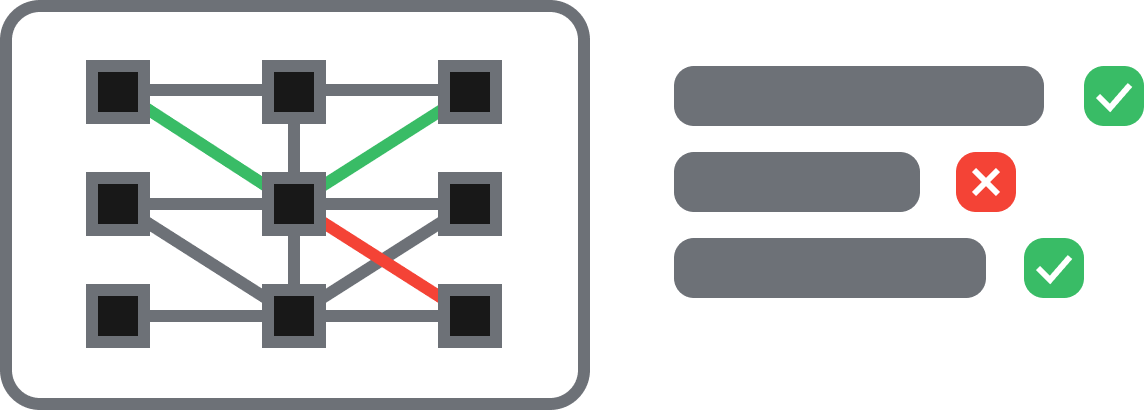An agentic workflow represents a groundbreaking system where AI agents autonomously manage tasks and processes. With agentic AI, you can unlock smarter automation that adapts to your needs in real time. These AI systems take initiative, make decisions, and execute tasks without constant human intervention. Agentic AI transforms how you approach automation by enabling flexibility and precision. GenAI tools further enhance this process, allowing AI to refine workflows iteratively. In today’s fast-paced world, agentic AI thrives in dynamic environments, helping you tackle complexity with ease and efficiency.We have every reason to believe. RAG pipeline It will become the mainstream of the industry and will gradually affect more and more people. https://www.puppyagent.com/
Understanding Agentic Workflows
Business Workflow
Image Source: Unsplash
What Is an Agentic Workflow?
An agentic workflow is a system where AI takes charge of tasks and processes autonomously. Unlike traditional automation, which relies on predefined rules, agentic AI uses intelligence to make decisions and adapt to changing conditions. These workflows empower AI to act independently, reducing the need for constant human oversight. By leveraging agentic workflows, you can achieve smarter automation that aligns with your goals.
Agentic AI operates as more than just a tool. It functions as an active participant in your operations. For example, it can analyze data, identify patterns, and execute tasks without waiting for manual input. This capability makes agentic workflows ideal for handling complex or unpredictable scenarios. With the integration of GenAI, these workflows become even more dynamic, enabling iterative improvements and better outcomes.
Key Components of Agentic Workflows
Agentic workflows rely on several essential components to function effectively. Understanding these elements helps you see how they work together to deliver results:
AI Agents: These are the core of agentic workflows. AI agents act autonomously to complete tasks, make decisions, and interact with systems or users.
GenAI Integration: GenAI enhances the capabilities of AI agents by enabling them to refine processes, generate insights, and adapt to new challenges.
Multi-Agent System: A multi-agent system involves multiple AI agents working collaboratively. This setup allows them to share information, divide tasks, and achieve goals more efficiently.
External Tools and Functions: Agentic workflows often integrate with external tools, such as web searches or code execution, to gather information and perform actions.
Feedback Loops: Continuous feedback enables AI agents to learn from their actions and improve over time, ensuring better performance.
These components work in harmony to create a seamless and adaptive system. By understanding them, you can design workflows that maximize efficiency and productivity.
How Agentic Workflows Differ from Traditional Workflows
Agentic workflows stand apart from traditional workflows in several key ways. Traditional workflows follow rigid, rule-based processes. They require human intervention to handle exceptions or changes. In contrast, agentic AI introduces flexibility and intelligence into the equation.
Here’s how agentic workflows differ:
Autonomy: Agentic AI operates independently, while traditional workflows depend on human input for decision-making.
Adaptability: Agentic workflows adjust to dynamic environments. Traditional workflows struggle with unexpected changes.
Collaboration: A multi-agent system allows AI agents to work together, unlike traditional workflows, which often involve isolated tasks.
Scalability: Agentic workflows scale effortlessly as your needs grow. Traditional workflows require significant manual effort to expand.
By adopting agentic workflows, you can overcome the limitations of traditional systems. These workflows enable you to handle complexity, improve efficiency, and stay competitive in a rapidly evolving landscape.
The Benefits of Agentic Workflows in Automation
Enhanced Efficiency and Productivity
Agentic AI revolutionizes how you approach efficiency and productivity. By allowing AI agents to take charge of tasks, you eliminate repetitive manual processes. These agents analyze data, make decisions, and execute actions faster than any human could. This speed ensures that your workflows operate at peak performance.
GenAI plays a critical role in enhancing this efficiency. It enables AI agents to refine their processes continuously. For instance, GenAI agents can identify bottlenecks in your operations and suggest improvements. This iterative refinement ensures that your workflows evolve to meet your needs.
A multi-agent system further boosts productivity. Multiple AI agents collaborate to divide tasks and share information. This teamwork reduces delays and ensures that every task gets completed efficiently. With agentic workflows, you can achieve more in less time while maintaining high-quality results.
Adaptability to Dynamic Environments
Agentic AI thrives in unpredictable situations. Unlike traditional systems, which struggle with change, agentic workflows adapt seamlessly. AI agents assess new conditions, adjust their actions, and ensure that your operations continue without disruption.
GenAI enhances this adaptability. It equips AI agents with the ability to learn from new data and refine their responses. For example, if market trends shift, GenAI agents can analyze the changes and adjust your strategies accordingly. This adaptability keeps you competitive in fast-changing environments.
Dynamic environments often require collaboration. A multi-agent system allows AI agents to work together to solve complex problems. They share insights and coordinate their efforts to handle challenges effectively. With agentic workflows, you gain a system that evolves with your needs.
Scalability for Business Growth
Agentic AI provides the scalability you need to grow your business. Traditional workflows often require significant manual effort to expand. In contrast, agentic workflows scale effortlessly. AI agents handle increased workloads without compromising performance.
GenAI ensures that this scalability remains efficient. It enables AI agents to optimize processes as your operations grow. For instance, GenAI agents can analyze resource usage and suggest ways to improve efficiency. This optimization ensures that your growth remains sustainable.
Agentic workflows also support scalability through integration. AI agents connect with external tools and systems to manage larger operations. This integration allows you to expand your capabilities without overhauling your existing infrastructure. With agentic workflows, you can scale your business confidently and efficiently.
Overcoming Challenges in Agentic Workflows
Common Challenges in Implementation
Implementing agentic workflows can present several challenges. Understanding these obstacles helps you prepare and address them effectively. One common issue is the complexity of integrating AI into existing systems. Many businesses rely on legacy infrastructure that lacks compatibility with modern AI technologies. This mismatch can slow down the adoption process.
Another challenge involves ensuring the reliability of autonomous AI agents. These agents must make decisions without human intervention, which requires robust algorithms and extensive testing. Errors in autonomous decision-making can disrupt operations or lead to undesirable outcomes.
Data quality also plays a critical role. AI depends on accurate and relevant data to function effectively. Poor data quality or incomplete datasets can hinder workflow optimization and reduce the effectiveness of agentic AI. Additionally, managing a multi-agent system can be difficult. Coordinating multiple AI agents to work collaboratively requires careful planning and monitoring.
Finally, resistance to change often emerges as a barrier. Employees may feel uncertain about adopting new technologies or fear that AI will replace their roles. This resistance can delay implementation and reduce the overall effectiveness of agentic workflows.
Common Challenges in Implementation
Overcoming these challenges requires a strategic approach. Start by assessing your current systems and identifying areas where agentic workflows can add value. Invest in tools and platforms that support seamless integration with your existing infrastructure. This step ensures that AI can operate effectively without disrupting your operations.
To enhance the reliability of autonomous AI agents, prioritize rigorous testing and validation. Simulate various scenarios to evaluate how these agents perform under different conditions. This process helps you identify potential issues and refine their decision-making capabilities.
Improving data quality is essential for successful implementation. Establish processes to clean, organize, and update your datasets regularly. High-quality data enables AI to make accurate decisions and optimize workflows effectively. Additionally, when managing a multi-agent system, use centralized coordination tools. These tools help monitor agent activities, facilitate communication, and ensure that tasks are completed efficiently.
Addressing resistance to change requires clear communication and training. Educate your team about the benefits of agentic AI and how it enhances their roles rather than replacing them. Provide hands-on training to help employees understand how to work alongside AI agents. This approach fosters acceptance and encourages collaboration.
By tackling these challenges head-on, you can unlock the full potential of agentic workflows. With proper planning and execution, you can create a system that drives efficiency, adaptability, and growth.
Actionable Steps to Master Agentic Workflow
Leveraging GenAI and Agentic AI Tools
To master agentic workflows, you must first understand the tools that power them. GenAI and agentic AI tools form the backbone of these workflows. They enable AI agents to operate autonomously and refine processes over time. By leveraging these tools, you can unlock smarter automation and achieve better results.
Start by exploring GenAI platforms that align with your business needs. These platforms provide AI agents with the ability to analyze data, generate insights, and adapt to changing conditions. For example, GenAI agents can identify inefficiencies in your operations and suggest actionable improvements. This capability ensures that your workflows remain optimized and effective.
Agentic AI tools also allow you to integrate external functions into your workflows. These tools enable AI agents to perform tasks like web searches, code execution, or data retrieval. This integration expands the capabilities of your workflows, making them more versatile and efficient. Additionally, a multi-agent system can enhance collaboration among AI agents. This system allows them to share information and divide tasks, ensuring seamless execution.
To get started, invest in platforms that support GenAI and agentic AI. Test these tools in small-scale projects to evaluate their performance. Gradually expand their use as you gain confidence in their capabilities. By doing so, you can harness the full potential of agentic workflows.
Best Practices for Designing Agentic Workflows
Designing effective agentic workflows requires a strategic approach. You need to focus on creating systems that maximize efficiency and adaptability. Following best practices ensures that your workflows deliver consistent results.
Define Clear Objectives: Start by identifying the goals you want to achieve. Clear objectives guide AI agents in making decisions and prioritizing tasks.
Choose the Right Tools: Select GenAI platforms and agentic AI tools that align with your objectives. Ensure these tools integrate seamlessly with your existing systems.
Incorporate Feedback Loops: Enable continuous learning by establishing feedback mechanisms. These loops allow AI agents to refine their actions and improve over time.
Optimize Data Quality: Provide high-quality data to your AI agents. Accurate and relevant data ensures better decision-making and workflow optimization.
Test and Iterate: Regularly test your workflows to identify areas for improvement. Use insights from these tests to refine your processes.
By following these practices, you can design agentic workflows that adapt to your needs. These workflows will help you achieve greater efficiency and scalability.
Learning from Real-World Applications
Real-world applications of agentic workflows offer valuable insights. By studying these examples, you can understand how to implement similar systems in your operations. Many industries have successfully adopted agentic AI to enhance their processes.
In eCommerce, businesses use GenAI agents to personalize customer experiences. These agents analyze user behavior and recommend products based on preferences. This approach increases customer satisfaction and boosts sales. Similarly, in healthcare, agentic AI streamlines administrative tasks. AI agents manage patient records, schedule appointments, and ensure compliance with regulations. These workflows reduce manual effort and improve service quality.
Another example comes from software development. Companies use a multi-agent system to plan, execute, and refine projects. AI agents collaborate to identify bugs, optimize code, and meet deadlines. This system enhances productivity and ensures high-quality outcomes.
By studying these real-world applications, you can gain insights into how to implement agentic workflows in your operations. You can apply these lessons to your own operations. Identify areas where agentic workflows can add value. Study successful implementations to understand best practices. Adapt these strategies to suit your unique requirements. By learning from real-world applications, you can accelerate your journey toward mastering agentic workflows.
Agentic workflows hold transformative potential for smarter automation. By adopting agentic AI, you empower your business to operate with greater efficiency and adaptability. These workflows enable AI to manage tasks autonomously, reducing manual effort and improving outcomes. GenAI tools further enhance this process by refining workflows and driving continuous improvement. Businesses that embrace these technologies gain a competitive edge in today’s fast-evolving landscape. Looking ahead, agentic workflows will play a pivotal role in shaping the future of automation, offering innovative solutions to meet the demands of dynamic environments.
FAQ
What is the primary purpose of agentic workflows?
Agentic workflows aim to enable AI agents to autonomously manage tasks and processes. These workflows help you achieve smarter automation by allowing AI to make decisions, adapt to changes, and execute tasks without constant human input.
How do agentic workflows differ from traditional automation?
Traditional automation relies on predefined rules and requires human intervention for exceptions. Agentic workflows, on the other hand, use AI to operate independently. They adapt to dynamic environments, collaborate with other AI agents, and continuously improve through feedback loops.
Can agentic workflows integrate with existing systems?
Yes, agentic workflows can integrate seamlessly with your current systems. AI agents connect with external tools, databases, and platforms to enhance functionality. Choosing compatible GenAI tools ensures smooth integration without disrupting your operations.
Are agentic workflows scalable for growing businesses?
Agentic workflows are highly scalable. AI agents handle increased workloads efficiently without compromising performance. GenAI tools further optimize processes as your business grows, ensuring sustainable scalability.
What challenges should I expect when implementing agentic workflows?
You may face challenges like integrating AI with legacy systems, ensuring data quality, and managing multi-agent systems. Resistance to change among employees can also arise. Addressing these issues with proper planning and communication ensures a smoother implementation process.
How can I ensure the reliability of autonomous AI agents?
You can ensure reliability by conducting rigorous testing and validation. Simulate various scenarios to evaluate how AI agents perform under different conditions. Continuous monitoring and feedback loops also help refine their decision-making capabilities.
Do agentic workflows require high-quality data?
Yes, high-quality data is essential for effective agentic workflows. AI agents rely on accurate and relevant data to make decisions and optimize processes. Regularly cleaning and updating your datasets improves workflow performance.
How do GenAI tools enhance agentic workflows?
GenAI tools empower AI agents to analyze data, generate insights, and adapt to new challenges. They enable iterative improvements, helping workflows evolve over time. These tools also expand the capabilities of AI agents by integrating external functions like web searches or code execution.
Can agentic workflows replace human roles?
Agentic workflows do not aim to replace human roles. Instead, they enhance your operations by automating repetitive tasks and improving efficiency. This allows you and your team to focus on higher-value activities that require creativity and strategic thinking.






